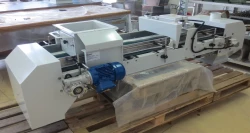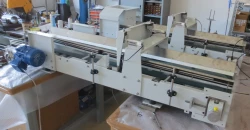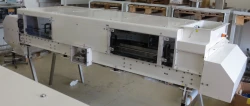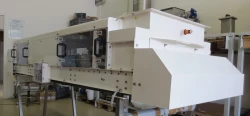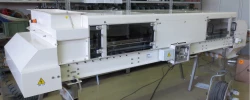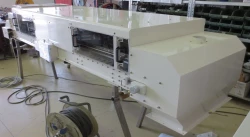Weigh Belts and Weighfeeders series NPW
Low capacities weigh belts series NPW
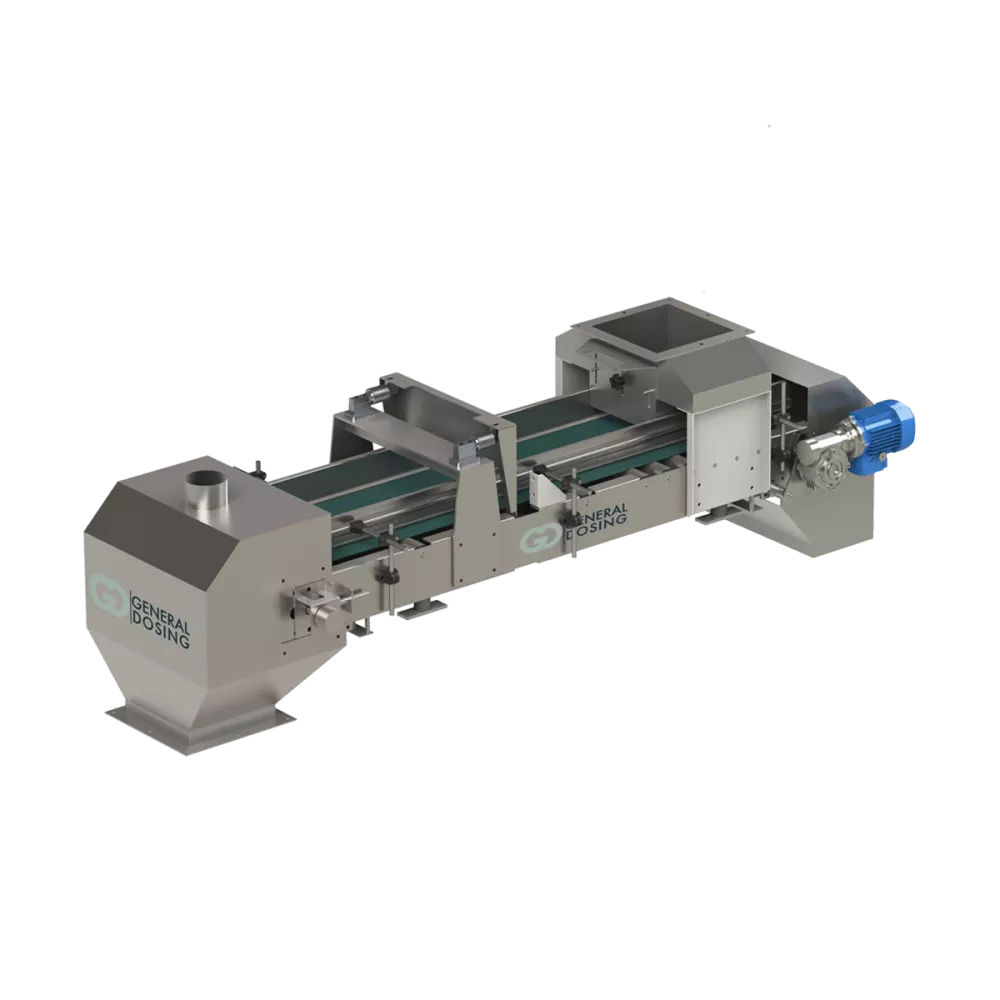
High capacities weigh belts series NPW
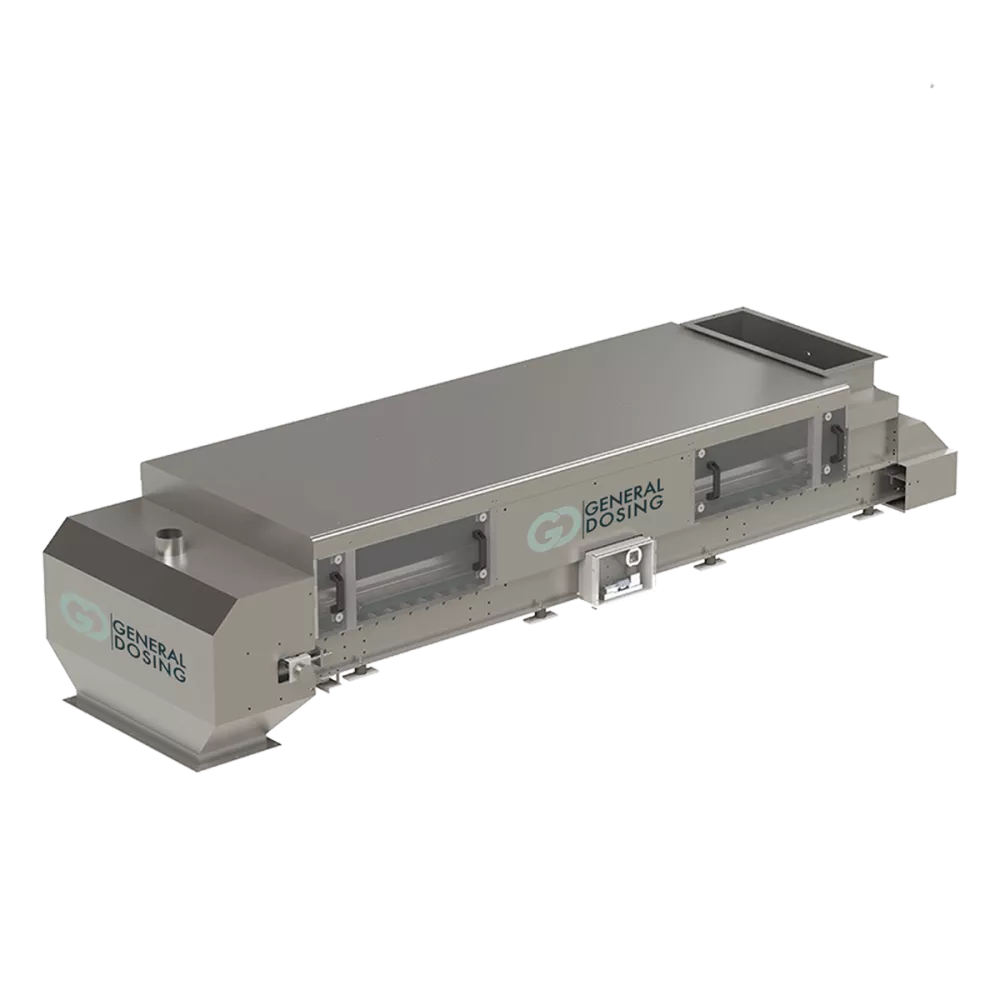
Weigh Belts and Weighfeeders NPW are machines having the same mechanical conformation. The difference between them is their function of use. The Weigh Belt is a machine used to measure the quantity of the product mechanically conveyed or coming by gravity from the outlet of a silo or a hopper. Among the most common mechanical conveyors there are screws, conveyor belts, vibratory feeders and rotary valves.
The Weight Belt can also process a signal to adjust and control the speed of the conveyor in order to get and maintain the wanted flow rate
The Weighfeeder as well as measuring the capacity of the transported product, regulates and controls its own speed in order to obtain a constant flow rate and corresponding to the one wanted.
The Weigh Belts and the Weighfeeders NPW are machines suitable for powder products not very hygroscopic and for materials with dimensions until some centimeters size as long as quite homogeneous.
The feeders series NPW are normally used for continuous dosing even if it is technically possible to use them for batch dosing.
The Weigh Belts and the Weighfeeders NPW are available in different sizes. The size choice is according to the throughput requested and according to the product characteristics. This kind of machines can make much more higher capacities compared to screw dosers or vibratory channel dosers. It is possible to reach capacities until some tens of tons per hour. On the contrary these machines are not suitable to work under 1 ton per hour with a good accuracy.
The Weigh Belts and the Weighfeeders NPW are employed to dose raw materials, both powder and granules or flakes, in the plastic industry, in the chemical industry in general and in the ceramic. They are used also in the milling and food industry for example to dose raw cereals or flakes and dried or dehydrated fruit.
The transport and dosing device of the product is constituted by a belt that can have plane or concave geometry operated by a gearmotor directly keyed on a tow roller.
The feeders series NPW have the prerogative not to damage the product because they do not have moving mechanical devices as it happens in the screw dosers instead.
They are preferable for particularly fragile products or more in general when their original particle size has to be preserved.
Another qualifying aspect is given by the particular regularity of the dosing flow. The product distributes evenly on the belt to form an even bed and it comes out with a waterfall flow having a regular and constant section , as opposed to what happens with dosing screw tools which create instead a pulsing flow cause to their conformation and their rotary motion.
The Weigh Belts and the Weighfeeders NPW are usually operated by three-phase asynchronous electric motors. It is also possible to use motorized rolls which give to the machine more compactness. In any case it is possible to adjust within proper limits, the belt speed with a frequency converter to obtain the wanted capacity in a minimum and maximum predefined range.
The feeders series NPW have a loading inlet whose geometry makes the product to be conveyed on the belt to form a transport bed with regular section. It is possible to vary the transport bed height by means of manually adjustable gate. This allows to optimize the dosing capacity range according to the product characteristics. The top of the loading inlet has a flange to connect to the discharge of a conveyor or at the bottom of a silo or a hopper installed above.
The product which passes on the belt is continuously weighted by a weigh portal hang to a couple of load cells and connected to an idle roll placed about in the middle length of the belt. The load cells are off-center or flexion type, aluminum or stainless steel manufactured, available also in the Atex version when it is requested.
On the idle roll an encoder is keyed by which the belt speed is detected to convert the measured weight in a hourly capacity, once made the calibrations needed.
The Weigh Belts and the Weighfeeders NPW have an outlet duct equipped with a bottom flange to eventually connect it to another conveyor or to a hopper installed downstream. The discharging outlet can have a hood with an aspiration sleeve to connect to an eventual dedusting system.
The belt is protected by a covering carter, bolted or removable, that prevents the accidental entry of foreign matter falling from above.
The Weigh Belts and the Weighfeeders NPW can be provided with their own storage hopper. It is available a wide variety of standard loading hoppers with different capacity.
The hoppers can have a polygonal or truncated conical, symmetrical or skewed shape and their design ensure a correct out flow and complete emptying even with poorly flowing products. The polygonal hoppers have rounded corners to allow a complete and easy cleaning; they can be equipped with wide transparent polycarbonate sight glasses and inspection window as needed. The hoppers truncated conical shaped can have a vertical agitator, which is useful for particularly compact products, that stick to the walls and have to be forced to come down the dosing body. Agitators with different geometric shape are available to chose according to the product characteristics.
The hoppers loaded manually have a completely removable lid or semi-openable with hinges. Inside it there is a safety grid which protects from the risk of contact with moving parts of the doser and prevents the accidental access of foreign matter.
As accessories of the hoppers there are level sensors, to detect the presence of product, and pneumatic vibrators or moto vibrators to prevent the formation of bridges. The most used sensors are capacitive types, rotary level sensors, vibrating level switches to choose according to the product characteristics.
The most used construction materials are PVC for the belt and stainless steel for the frame, loading inlets and unloading outlets and eventual storage hoppers. The standard steels used are Aisi 304 and 316L, but it is possible to use also carbon steel on request.
The stainless steel outer surfaces are satined 180 mesh. It is possible to have them also glass bead blasted, electro-polished or mirror-polished on request.
Electrical control panels can also be supplied including software specifically designed accordingly to the requested functionality.

